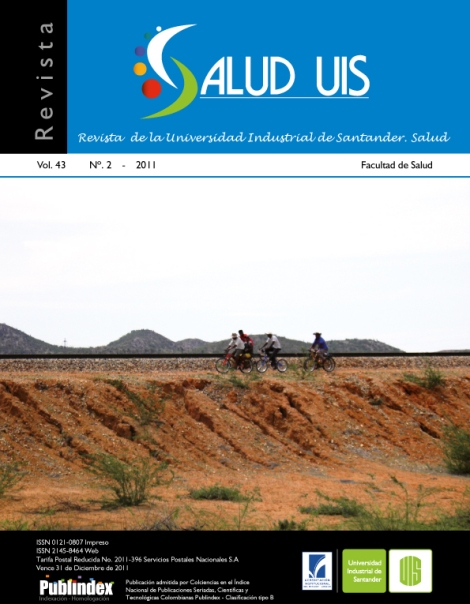Resumo
RESUMEN
Introducción: El grado de diferenciación tumoral, la expresión de los receptores de estrógeno y progesterona y la sobreexpresión de la proteína HER-2/neu son factores de tipo pronóstico y predictivo importantes en la evolución y conducta terapéutica del carcinoma mamario infiltrante. Se ha encontrado en diversos estudios que los inmunofenotipos que no expresan los receptores hormonales o que sobre expresan la proteína HER-2/neu se asocian con pobre diferenciación tumoral.
Objetivo: Determinar el perfil inmunofenotípico del carcinoma ductal infiltrante y establecer su relación con el grado de diferenciación tumoral.
Metodología: Usando técnicas de inmunohistoquímica se determinaron los receptores de estrógeno (RE) y progesterona (RP), y la sobreexpresión de la proteína HER-2/neu en muestras de carcinoma ductal infiltrante y se identificaron sus fenotipos basados en la clasificación de Cheang. La variedad histológica y el grado de diferenciación tumoral en los carcinomas ductales infiltrantes fueron evaluados en tejido coloreado con hematoxilina-eosina.
Resultados: Se incluyeron las muestras de 58 pacientes con carcinoma ductal infiltrante. El 15,5% de los carcinomas eran bien diferenciados, 63,8% moderadamente diferenciados y el 20,7% restante pobremente diferenciados. El inmunofenotipo triple negativo se presentó en 29,3% de las muestras, HER2+ en el 20,7%, luminal/ HER2+ en el 1,7%, luminal A en el 43,1% y ER-/PR+/HER2- en el 5,2%.
Conclusiones: En nuestro estudio, no se encontró asociación entre el grado de diferenciación tumoral y los inmunofenotipos. Salud UIS 2011; 43 (2): 149-158
Palabras clave: Carcinoma ductal infiltrante, grado de diferenciación tumoral, receptores de estrógenos y progesterona, HER-2/neu
ABSTRACT
Introduction: The degree of tumor differentiation, the expression of estrogen and progesterone receptors and HER-2/ neu protein overexpressing are important prognostic and predictive factors in the evolution and therapeutic management of invasive breast carcinoma. In different studies were found that the immunophenotypes that do not express hormonal receptors or the HER-2/neu protein overexpressing have been associated with poor tumor differentiation.
Purpose: To determine the immunophenotypic profile of invasive ductal carcinoma and establish its relationship with the histological grade.
Methodology: Using immunohistochemistry were determined the estrogen receptor (ER) and progesterone (PR) and HER-2/neu protein overexpression in invasive ductal carcinoma samples and their phenotypes were identified based on classification of Cheang. The histological subtype and degree of tumor differentiation in invasive ductal carcinomas were evaluated in tissue stained with hematoxylin-eosin.
Results: In this study were included 58 patients with invasive ductal carcinoma. 15.5% of the carcinomas were well differentiated, 63.8% moderately differentiated and the remaining 20.7% poorly differentiated. The triple-negative immunophenotype was show in 29.3% of the samples, HER2+ in the 20.7%, luminal/HER2 + in the 1.7%, luminal A in the 43.1% and the phenotype (ER-/PR+/HER2) in the 5.2%.
Conclusions: In this study don’t was found association between the degree of tumor differentiation and the immunophenotypes. Salud UIS 2011; 43 (2): 149-158
Keywords: Invasive ductal carcinoma, degree of tumor differentiation, estrogen and progesterone receptors, HER- 2/neu
Se autoriza la reproducción total o parcial de la obra para fines educativos, siempre y cuando se cite la fuente.
Esta obra está bajo una Licencia Creative Commons Atribución 4.0 Pública Internacional.
